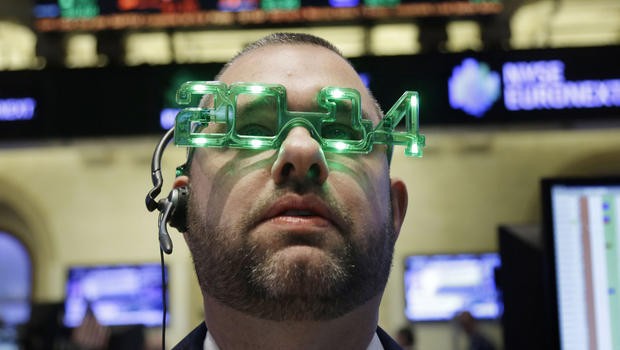Emerging Market Funds Too Big to Fail (ODMAX VEIEX VWO EEM)
Post on: 30 Август, 2015 No Comment

Investing in emerging markets was a good strategy in 2010. This year, however, many countries are confronting inflation, appreciating currencies, and, in some places, political and financial stability. There are sure to be impacts on equities, but how and how much will those impacts affect a large, diversified fund?
There are some very large-cap open-end funds and ETFs that manage more assets than the GDP of any number of small companies. Were going to take a look at four, two mutual funds and two ETFs: Vanguard Emerging Markets Stock Index (VEIEX); Oppenheimer Developing Markets A (ODMAX); Vanguard MSCI Emerging Markets ETF (NYSE: VWO); and iShares MSCI Emerging Markets Index (NYSE: EEM).
The Vanguard Emerging Markets Stock Index (VEIEX) boasts total assets of $64.2 billion, bigger than all but about 66 countries around the world. The fund uses a passive management approach to invest in all the (currently) 912 common stocks in the MSCI Emerging Markets Index. More than half of the stocks Asia-based, with Latin American and Emerging European stocks garnering about 22% and 11%, respectively. In many ways the fund is not as diversified as it may seem because over half of its assets are invested in China, Brazil, and South Korea. The fund also invests about 85% of assets in large-cap stocks. Fund manager Michael Pierre came on board in 2008. Morningstar gives the fund a 3-star rating.
The Oppenheimer Developing Markets A (ODMAX) fund holds assets totaling about $24 billion. This is an actively managed growth fund that invests in stocks from companies with principal activities in at least three developing markets. Of the 120 stocks in its portfolio nearly 45% are Asian shares. Latin American shares account for almost 29% of assets and Greater Europe/Africa account for nearly 26% of assets. Of the funds top holdings, only one is from China, oil E&P company Cnooc. Compare this with VEIEXs top holdings, which includes four China-based companies in its top ten. Fund manager Justin Leverenz took over in 2007. The fund carries a 5-star rating from Morningstar.
The Vanguard MSCI Emerging Markets ETF (NYSE: VWO), like VEIEX, invests in all 912 stocks included in the MSCI Emerging Markets Index, and seeks to track the indexs performance. Net assets total $64.2 billion. Energy and materials form a big part of the index (about 30%), while financials account for another 24%. The fund also holds 26% of its assets in Taiwanese and South Korean companies. These two nations may be upgraded by MSCI to developed status later this year, changing both the geographic balance in this fund and its weighting toward technology, a strong suit of both countries. The fund gets a 4-star rating from Morningstar.
The iShares MSCI Emerging Markets Index (NYSE: EEM) also seeks to track the MSCI Emerging Markets Index, but does not invest in every index company. Nearly 60% of its $37 billion in assets is allocated to Asia equities. Latin American shares account for about 21% of assets and 19% of assets are invested in emerging Europe and Africa. Because it includes 800 of the 912 index stocks, the fund closely resembles VMO and VEIEX. This fund holds a 4-star rating from Morningstar.
In 2010, VEIEX returned 17.84%; so far this year, returns are -3.46%. ODMAX returned 26.98% in 2010, but is down -0.11% so far in 2011. VWO posted NAV returns of 19.97% in 2010 and 2.4% too date in 2011. EEM returned NAV of 15.95% in 2010 and is up 1.87% so far this year.
Clearly, 2011 is not 2010, at least so far. Chinas growth has slowed as the country aims to tame inflation currently running above 5%. Indian inflation is running nearly double Chinas, and the government has tightened monetary policy in an effort to bring the rate down. Currency appreciation has hit many other Asian countries, including Singapore, Australia, and South Korea. As always, China is the big dog here, with more than $3 trillion in foreign exchange reserves and little interest in losing a huge part of that by allowing its currency to appreciate fully.
In Latin America, a leftist-nationalist has recently been elected president in Peru and the nationalization of resources in Venezuela and Bolivia has depressed some of the value in those countries equities. Brazil and Chile have been fighting off inflation by raising interest rates, which only attracts more foreign investment and pushes up the value of the local currency.
The troubles in Europe are well-known, but less well-known are the debt problems and currency issues in the emerging markets of Eastern Europe. It is unlikely that any of these nations could have a severe impact on global economic recovery, but problems here inevitably bring a reaction from Russia. And speaking of Russia, VEIEXs largest single holding (1.89%) is Gazprom, the Russian natural gas monopoly.
Rather than looking at ways that these large funds could fail, it is perhaps more interesting to ask whether or not they are too big to succeed. With tens of billions spread across hundreds of investments, a marked improvement in returns depends on significant improvements in the performance of dozens of portfolio equities.
The top holding in each of these funds, except EEM, amounts to right around 2% of the funds assets. And the percentages fall below 1% rapidly. Even if a dozen equities doubled in value, the total impact on the entire fund would barely move the needle. This is safe enough, but hardly spectacular.














